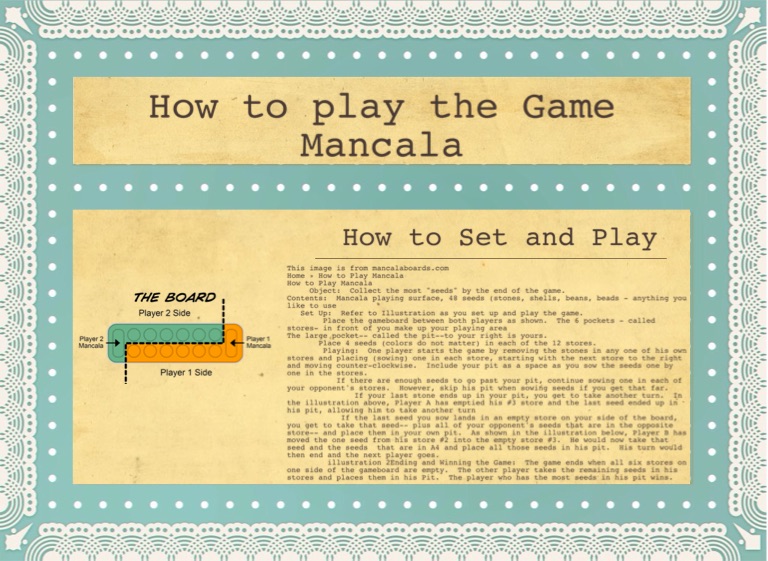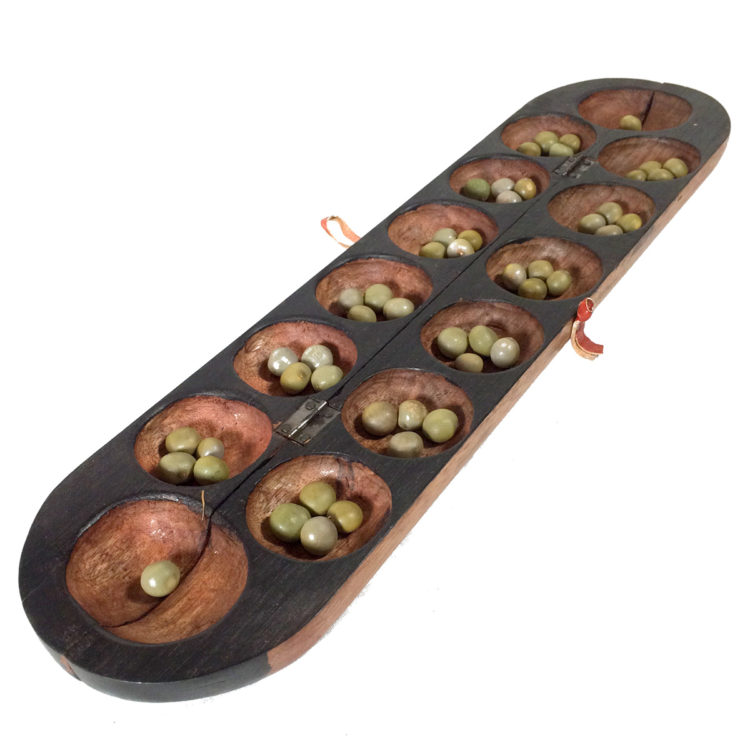

This can help you set up potential captures, which can help you rack up more stones. Think ahead and aim for empty pockets on your side of the board. However, you can also aim to block your opponent from doing this by starting from your right-most pocket. The first move is to always start with the third pocket on your side because the fourth stone will always drop in your store, netting you an extra turn.

However, we’ve highlighted some potential winning strategies you can use below. There are a lot of different strategies you can employ to try and win Mancala. If the pocket opposite it has one (or more) stone in it, you can capture them and move them to your pocket. To capture your opponent’s stones, you need to drop your final stone in an empty pocket, and it must also be on your side of the board. You can also capture your opponent’s stones this can be very advantageous in the late game. If you drop your last stone in your store, you can instantly take another turn. There are a few extra things to remember when it comes to navigating the board. Just make sure you both know which store is yours you can decide this before you start to play. You’ll also be sitting/ standing in front of your half of the board, which makes identifying your pockets easy. But the board is quite simple when you get used to it, and players can only move counter-clockwise, making navigation easier. It can look a little confusing when you see a Mancala board, especially when you factor in the colorful stones. Then you count up the stones in each player’s store to see who wins! That’s the basics but let’s take a more in-depth look at the Mancala board and some winning strategies you can employ. The game continues following this pattern till one person’s six pockets are all emptied. You don’t put a stone in their store, though you go back to your side of the board. But, again, you must deposit a single stone in each pocket as you go. This movement works the same way on your opponent’s side of the board. When you reach your store, you can deposit a single stone in it. You can move the colorful stones from one pocket to the next but only deposit a single stone in each pocket. Players take turns moving counter-clockwise around the board.
#Capture in mancala how to#
Below, we’ll outline how to play Mancala, examine how the board works, and even look at some winning strategies you can use. When six pockets on either side of the board are empty, the stones (in each store) are counted, and the winner is declared. To get as many in their store as possible. Players move their stones around the board from pocket to pocket. Mancala might seem complicated, but it’s easier than you might think and in some ways similar to the classic board game Ludo. The board even folds shut for more accessible transportation. Thankfully you can easily find one online, and this wooden Mancala game board would make a fine choice. Since Mancala is a historical board game, finding it in shops might be difficult. The player with the most stones will win the game! Before we look at the board in more detail, let’s look at what you need to play Mancala. You need to count up the stones in each player’s store when this happens.

When all the pockets on one side of the board are emptied, the game ends. Mancala aims to get as many stones in your store as possible. You should get 48 stones with the board, and four stones go into each pocket. The game of Mancala is played using these and colorful stones. At the end of each row is a larger circular hole called mancalas or stores. These boards are rectangular and feature twelve small holes six on each side are called pockets.

The game is played with two players on a Mancala board. But for simplicity’s sake, we’ll call the game Mancala in this guide. In many western countries, the name Mancala is also used for the game of Oware. Adding to this is the name Mancala because this name is also a collective term for a group of games using the same board. Now, like many older games, Mancala can seem quite complicated and a little intimidating for beginners. While we may never know with complete certainty, it’s believed the game’s creation can be dated back to Eritrea and Ethiopia, around the 6/7th centuries. The game was played in many different countries, including Europe, America, and Africa. Mancala is an ancient game it even rivals other ancient classics like Chess and Shogi. Mancala might look simple enough, but it has a learning curve our game guide will help you learn how to play and, most importantly, win! What is Mancala? But it’s believed that even older versions of the game may have existed. Mancala boards were discovered in the ruins of ancient Roman bathhouses. Mancala is one of the world’s oldest board games.


 0 kommentar(er)
0 kommentar(er)
